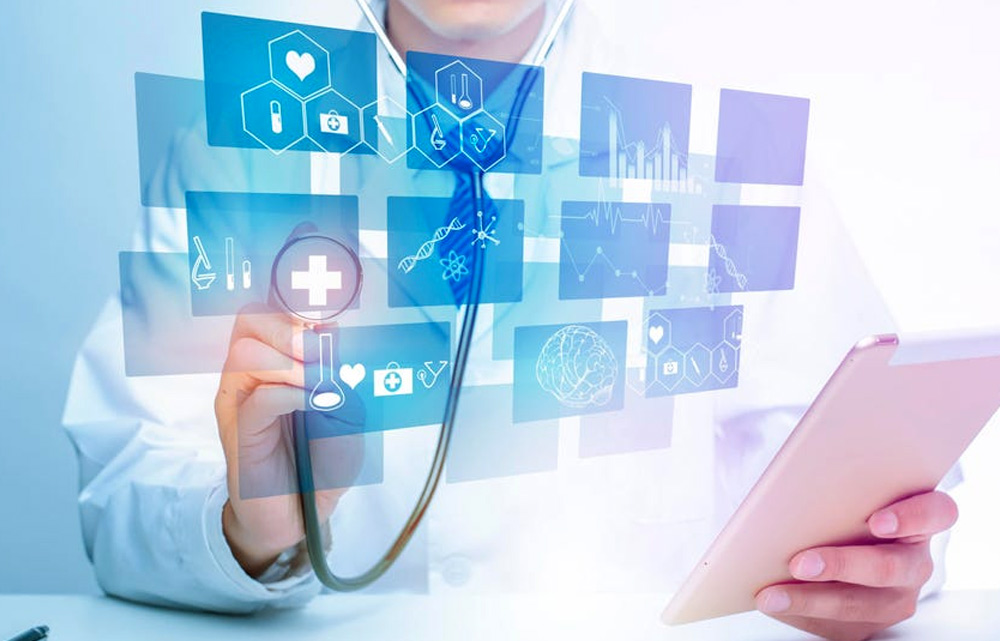Crises frequently bring out people’s creative selves, leading to significant shifts. This is how things have been going along with the 2019 coronavirus disease (COVID-19). Modern healthcare technology has allowed medical professionals to better manage their patients by lessening the risks associated with face-to-face interactions, lengthy wait times in crowded waiting rooms or laboratories, and in-patient stays. Here are some new technologies that help the medical system.
Artificial Intelligence
AI is used in various settings, including medical diagnosis and individualised treatment plans. As in the case of the COVID-19 pandemic alert, it is being utilised to power systems that process thousands of computed tomography scans in mass detection. In addition to boosting the precision of diagnosis and monitoring, this frees up radiographers and doctors to focus on patients.
The pharmaceutical industry uses machine learning to replace the time-consuming and costly process of manually searching through chemical libraries in search of promising new drug candidates with computer-generated simulations of trials that adjust many parameters. The entire operation takes far less time and costs substantially less money.
With artificial intelligence and machine learning, robotic devices are being created to take over the mundane, repetitive activities currently performed by trained medical professionals. They’ll have more time to spend on each patient, increasing the likelihood of a positive outcome.
A New Era In Mobile Health
MHealth, or mobile health, refers to using wireless and mobile technology to collect and analyse health data. These methods promise to deliver better healthcare at lower cost. They can enable fewer service providers to keep tabs on more people, individually and collectively.
Mobile health applications can encourage healthy habits for primary or secondary disease prevention, aid in the self-management of chronic conditions, enhance provider training, and reduce unnecessary medical visits. At the same time, they can provide unprecedented levels of individualised treatment.
mHealth can be used in smartphones, smartwatches, and other wearable devices to collect data on users’ health and wellness while they go about their day as usual. This information can be utilised now and, in the future, to shed light on a wide range of trends and predicted indicators that can aid research-driven initiatives to promote and improve patient healthcare.
Telemedicine
Due to pandemic travel limitations, telemedicine is being used in many nations worldwide. With this innovative technology, medical professionals may now diagnose and treat various conditions without physically seeing a patient. The patient and the doctor benefit from the time and money savings, so this trend isn’t going away anytime soon.
Virtual Reality
It’s possible to instruct medical students outside the hospital without putting them at risk by using augmented and virtual reality to distract anxious patients during surgical procedures. Providers can obtain information about their patients without taking their hands off of them or interrupting the current procedure by switching to a hands-free mode of operation.
The Internet Of Medical Things
Patients and clinicians can better keep tabs on and manage chronic diseases thanks to the Internet of Medical Things (IoMT), a system of interconnected devices and smartphone apps. For instance, people with problematic alterations can be diagnosed early enough to prevent heart attacks with the help of wearable electrocardiography (ECG) monitors.
Fever, blood sugar, and heart rate can all be monitored using additional wearable technology. It is predicted that the IoMT will account for nearly one-third of the global IoT (Internet of Things) industry in the future.
Digital Twins
Digital twins allow the simultaneous manipulation of two physical things in a computer-generated virtual environment. This is particularly relevant in the context of the diversity of recently commercialised medical gadgets, each of which was likely built digitally with the full expectation that its physical counterpart would be identical in every respect.
In addition, testable models can be developed, and the results are generally solid. This technology also underpins the cost- and time-saving practice of remote surgery.
Blockchain
There is still some debate about whether or not to implement blockchain technology. Still, the benefits of healthcare data sharing between authorised providers and patients regarding security, efficiency, and speed are becoming increasingly apparent. The tool’s architecture makes it possible for many people to utilise it at once without jeopardising the integrity of a central ledger. Together with the Internet of Medical Things and cloud computing, this represents a severe threat to the status quo of EHRs.
Nanotechnology
The advent of nanotechnology has resulted in numerous novel therapeutic approaches. By 2021’s close, reports surfaced of Xenobots, microscopic organic robots capable of replicating themselves. Nanotechnology has many potential medical applications, such as nanobots for disease detection by travelling through microscopic blood vessels and nanoparticle drug delivery systems for precisely delivering toxic drugs to the cells that are their targets while minimising or eliminating off-target effects.
3D Printing
One potential application of 3-D printing technology is the creation of replacement body parts, including artificial veins, implants, bionic prostheses, individualised surgical equipment, and even tablets. This method is used in the mass manufacture of many drugs.
Conclusion
However, newer healthcare technologies require vigilant monitoring via new regulatory frameworks to ensure that patients continue to be benefited and kept at the centre of healthcare despite the realisation that human nature remains the same and that the real aim of technology has always been profitability.



